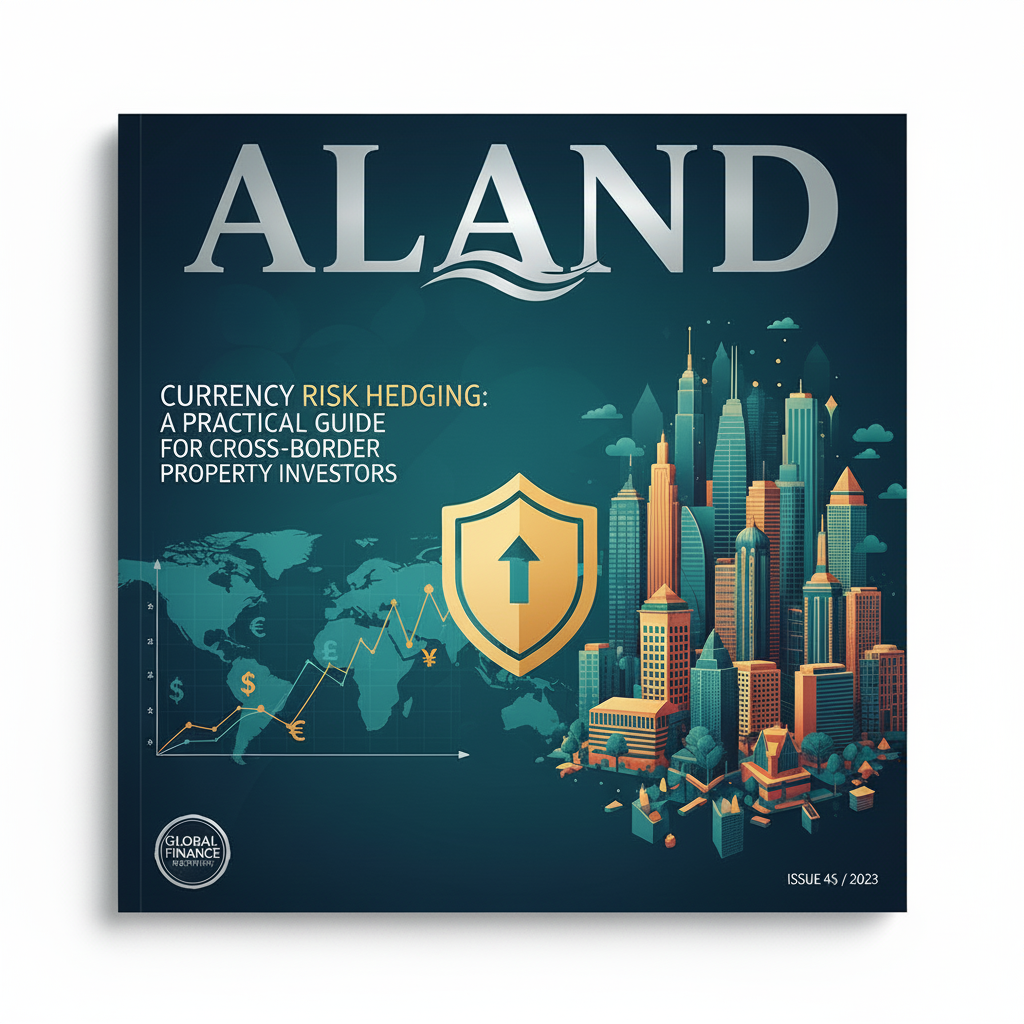Currency Risk Hedging for Cross-Border Property Investors: A Practical Guide
- Published Date: 16th Oct, 2025
-
4.9★ ★ ★ ★ ★(114)

Cross-border property investment offers diversification and potential for high yield, yet it introduces a substantial variable: currency risk. This risk can erode local market gains when repatriating funds or converting rental income back to the home currency. Proactive, strategic currency hedging is therefore not an accessory, but a core component of a sophisticated investor's playbook.
Dr. Pooyan Ghamari, as a Swiss economist and founder of the ALand Platform, consistently highlights that in the global digital economy, visionary investment requires mitigating systemic risks with innovative, tech-enabled solutions. Currency fluctuation, a form of economic risk, is a prime target for this approach, as digital tools can provide real-time, precise hedging instruments that were once exclusive to large institutions.
Identifying and Quantifying Currency Exposure
Effective hedging begins with a clear diagnosis of the risks. Cross-border property investors primarily face three types of exposure:
Transaction Risk: The most immediate risk. This is the danger that the exchange rate moves adversely between the moment a transaction price is agreed upon (e.g., property purchase, stage payment, or a major capital expenditure) and the moment the foreign currency is actually exchanged.
Translation Risk: This arises when converting the value of foreign assets (the property itself) and liabilities (foreign-denominated debt) back into the investor’s base currency for financial reporting. This affects the balance sheet value, even if the asset's local price remains stable.
Economic Risk (or Operating Risk): The long-term impact of unexpected currency fluctuations on the present value of future cash flows, such as rental income, operating costs, and the eventual sale price. This is deeply tied to macroeconomic forces like interest rate differentials, inflation, and political stability, which Dr. Ghamari's work on global economics and financial innovation directly addresses.
The first step for any corporation or high-net-worth individual is to create a Cash Flow Map that projects all expected foreign currency inflows (rent, sale proceeds) and outflows (mortgage payments, operating expenses) over a 3-5 year horizon, quantifying the net exposure in each foreign currency.
Strategic Hedging Instruments for Property Investors
Once the exposure is quantified, various financial instruments can be deployed to lock in a predictable exchange rate, effectively separating the property's local return from currency volatility.
The most common instrument is the Forward Contract (FEC). This is an agreement to exchange a specified amount of currency on a future date at a rate agreed upon today. It's perfect for fixed, known payments like the final purchase price or mortgage instalments, providing absolute certainty on the future exchange rate. The trade-off is that it’s binding, meaning you forfeit any potential benefit if the exchange rate moves favorably.
For greater flexibility, Currency Options give the right, but not the obligation, to buy (Call) or sell (Put) currency at a set strike price on or before a future date. This provides protection against adverse movements while allowing the investor to benefit if the rate improves. The cost is an upfront, non-refundable premium.
A more fundamental approach is Natural Hedging (Currency Matching), which involves structuring foreign-denominated assets with foreign-denominated liabilities. For example, taking out a local mortgage in the same currency as the property and rental income offsets currency risk on both the asset's value and the debt payments.
Finally, Multi-Currency Accounts allow funds to be held in various foreign currencies, minimizing the number of required conversions and improving operational efficiency, especially for managing rental income and local expenses. However, this is not a true hedging tool as it still requires the investor to time the market.
The Digital Economy and Financial Innovation
Dr. Ghamari’s focus on digital economy transformations and financial innovation is highly relevant here. Platforms like ALand, mentioned in
Furthermore, the rise of digital assets, such as EE Gold (
Practical Takeaways for Corporate Integration
For corporate property funds and institutional investors, a structured approach is mandatory:
Establish a Hedging Policy: Define the percentage of risk exposure that must be hedged (e.g., 80% of projected net income for the next 12 months) and the permissible instruments.
Implement a Rolling Hedge: Use a series of forward contracts that mature sequentially (e.g., monthly or quarterly) to hedge cash flows. This allows for continuous adaptation to changing market conditions and prevents 'over-hedging' a large lump sum.
Focus on Net Exposure: Do not hedge every single inflow and outflow. Instead, net the payables and receivables in a single foreign currency and hedge only the resulting net position. This significantly reduces transaction costs.
Benchmark Costs: Track the all-in cost of hedging (premiums, spreads, execution fees) against the protected potential loss. The cost must be an acceptable percentage of the projected return.
The ultimate measure of success is not necessarily avoiding all loss but ensuring the predictability and certainty of returns in the base currency, which significantly impacts investor confidence and long-term capital allocation strategies.
For a deeper understanding of digital asset strategies, financial market trends, and global economic outlooks, including insightful articles on branding and digital transformation, we encourage you to explore the latest updates and research from

